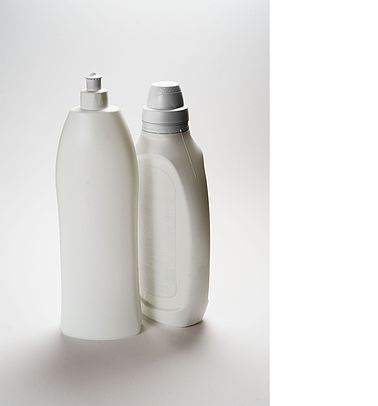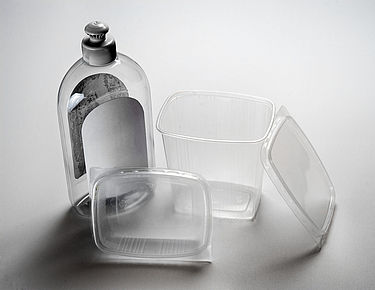Recyclability of packaging
As per section 23 (2) no. 1 KrWG (Kreislaufwirtschaftsgesetz – Circular Economy Act), parties who develop, produce or distribute a product bear producer responsibility. The goal is to produce – in a resource-efficient manner – re-usable, durable products that are suitable for proper, safe and high-quality recovery and environmentally friendly disposal after use.
However, it is prevention that remains the top priority within the hierarchy of circular economy law. Omitting packaging, minimising the use of resources and re-use make for the most monetary savings; thus, they are the preferred option for producers also from an economic point of view.
The second priority is as high-quality a recovery as possible: recycling. This is where the Verpackungsgesetz (Packaging Act) adds a potential benefit: section 21 VerpackG (Packaging Act) requires system operators to create financial incentives for recycling-friendly packaging design, for using recyclates and renewable resources.
Recycling-friendly design within the meaning of the Verpackungsgesetz implies striving for as high a degree of recyclability as possible when designing and producing packaging. The goal is to keep the material used for production in a closed substance cycle, so that new material – ideally new packaging – can be created from a product or packaging after recovery or recycling. In pursuit of this goal, recycling-friendly packaging design and suitable material as well as production processes are to be fostered in the sense of the Verpackungsgesetz. In other words: after use, packaging should be turned into a secondary product of the same material as much as possible.
It should be added that restrictions apply to the use of recyclates in food packaging made from plastics. PET (polyethylene terephthalate), which is used in bottles for beverages and thermoforming films, is the only type of plastic approved for use in food contact at the moment. The authority granting or refusing authorisation is the European Food Safety Authority (EFSA). It cannot be ruled out, however, that developments in packaging technology will make it possible to produce food packaging from recyclates above and beyond PET in the medium to long term. The restriction on the use of recyclates does not apply to other food packaging such as glass, where an average of 60 percent of the material used in production is recycled and has been for many years, with no authorisation necessary.
Recycling packaging: progress, setbacks and challenges
Packaging recycling is part of a complex ecosystem of various influencing factors, differing interests and great challenges. These dynamics are the topic of this fact sheet, which will also take a close look at the state of high-quality recycling in Germany.
Advantages of recycling-friendly design:
- Support for sorting and recycling processes
- The possibility to reprocess into high-quality recyclates
- Closed cycles: better availability of recyclates for own packaging
- Environmental protection by safeguarding resources and reducing carbon emissions
- Support towards a modern recycling economy
- Savings
Goals:
- Promotion and advancing recycling-friendly design along the entire value chain
- Use of recyclates
- Optimising packaging design, including material characteristics and colours
- Minimising the quantity of materials required to make the packaging
- Preventing packaging waste in general
- Option of clean recycling of products and packaging
Conclusion:
Sustainable packaging and recycling-friendly design help prevent waste and take pressure off the environment.
Positive packaging examples to assess recyclability:

This picture shows a positive example of compatibility: white, uncoloured PP/PE packaging is mono-material packaging, and as such offers a high level of recyclability. It is easy to separate from other packaging (and allocate to a dedicated recycling path) as white material will absorb near infrared (NIR) light.
As they are recognisable as PE or PP in the sorting process, white mono-material packaging with only a small label offers a high level of recyclability.
The recycling process can turn the white packaging into pellets, which then can be coloured as desired.

This picture shows packaging with a high degree of sortability. The packaging in the picture has either no labels or only small labels, so that sorting machines can easily identify the material. A general note on labels and sleeves: the smaller the label or the sleeve on any given packaging
(< 50 percent), the more probable it is that the sorting machine will identify the packaging correctly. Bottles and cans made from a single material, such as PP, PE, PS or PET-A, would in theory offer a high degree of recyclability based on the material alone. However, if they are carrying too large a label, they cannot be allocated to the right recycling path, thereby reducing their recyclability in practice to zero. The allocation also depends on the material types use for label and container, and the combination thereof.
The two pieces of packaging pictured each offer a high degree of recyclability, based on their labelling and their material (PET-A/PP).


